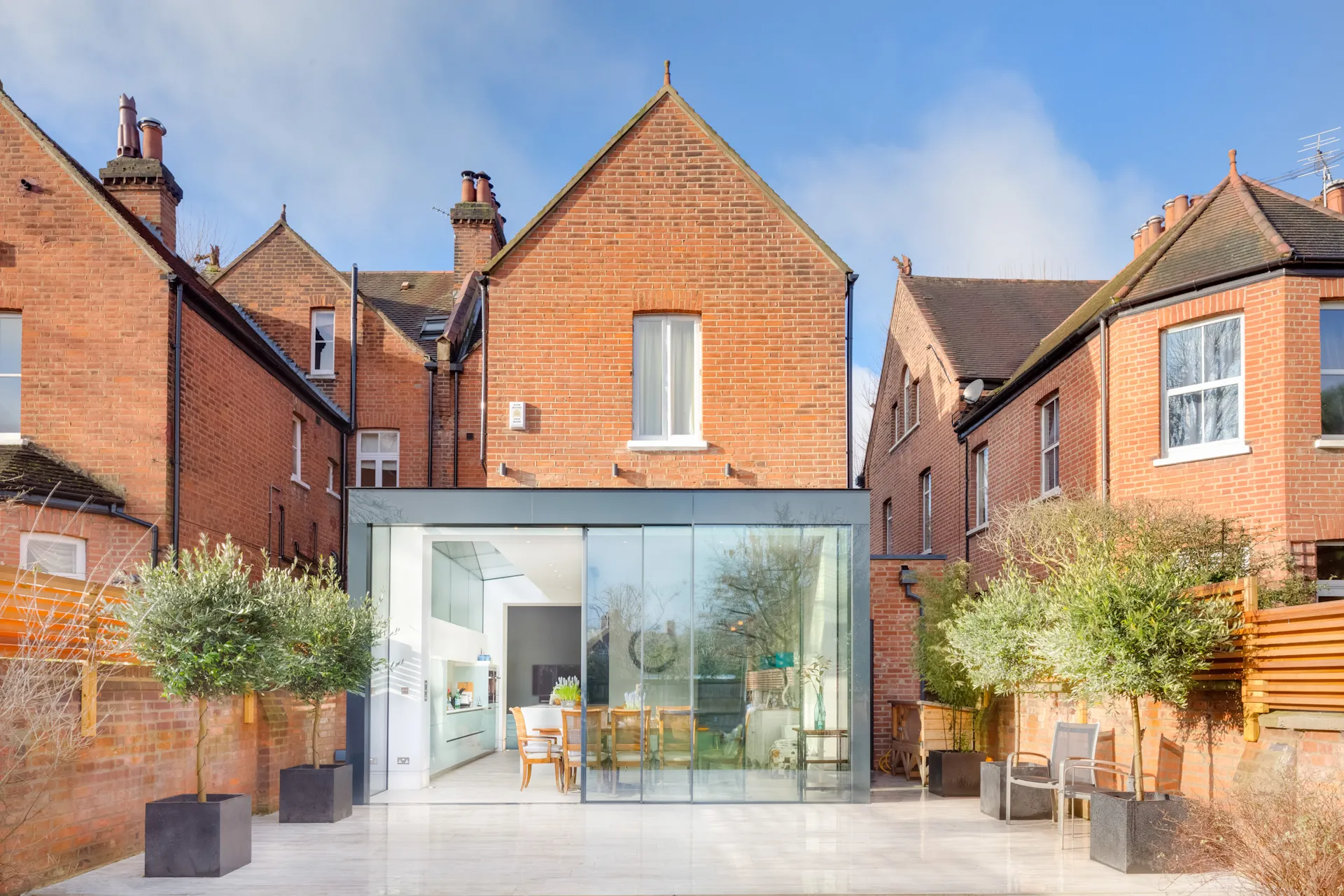
Mastering Planning Permission Applications in London: Costs, Process, and Requirements

Successfully navigating London’s planning permission application process is crucial for any luxury residential project to move forward legally and efficiently. Planning permission is the official nod from your Local Planning Authority (LPA) confirming your proposed developments align with the Town and Country Planning Act 1990. For instance, if you’re planning a home extension, you’ll need this approval to steer clear of enforcement action. This guide will walk you through when consent is necessary, give you an idea of application fees, detail the step-by-step process, clarify Permitted Development Rights, and show how Convert Construction’s expert support can smooth your project from initial concept right through to final approval.
Town and Country Planning Legislation
The Town and Country Planning Act 1990 serves as the foundational legislation for land use and development in England and Wales. Specifically, Section 57(1) of this Act mandates that planning permission is a prerequisite for carrying out any development on land, establishing the legal framework for controlling building operations and changes of use.
This citation verifies the article’s initial statement regarding the legal basis of planning permission and the Town and Country Planning Act 1990.
What Exactly Is Planning Permission and When Do You Need It in London?
Planning permission is the formal go-ahead required for most building works, signage, and changes of use across London. Its purpose is to strike a balance between your individual development aspirations and the broader interests of the community, alongside maintaining design standards. For example, adding an extension to a two-storey terrace without the proper consent could result in enforcement action. Understanding these requirements from the outset is key to avoiding costly redesigns and ensuring full compliance.
What Does Planning Permission Mean for London Properties?
For your London property, planning permission signifies that your proposal meets the local design, heritage, and environmental policies upheld by borough councils. It involves a thorough review by the LPA of your architectural drawings, impact assessments, and consultations with neighbours to confirm its suitability. Gaining consent assures you that your development harmonises with the London Plan and respects the character of the area, thereby safeguarding both your investment and community relations.
When Is Planning Permission Required for Home Extensions and Renovations?
Homeowners typically need planning permission if their extension:
- Extends more than 3m to the rear of a semi-detached house.
- Adds an extra storey above the existing roofline.
- Involves a change in the property’s use class (e.g., from residential to commercial).
These specific limits are in place to ensure that any significant alterations respect the existing scale, light, and heritage context before construction even begins.
How Do Permitted Development Rights Affect Planning Permission Needs?
Permitted Development Rights (PDR) allow for certain types of work to proceed without the need for a full planning application, provided they meet specific size and design criteria. The table below outlines common householder projects and highlights when full approval is still essential.
Impacts of Permitted Development Rights on Housing Quality
Research led by Ben Clifford from University College London (UCL), commissioned by the Royal Institution of Chartered Surveyors (RICS) in 2018, assessed the effects of extending permitted development rights (PDR) for office-to-residential conversions in England. The study found that while PDRs increased housing supply, they often resulted in a higher quantity of poor-quality housing compared to developments that underwent full planning permission.
This research supports the article’s discussion on Permitted Development Rights and their implications for the quality of residential developments.
Even when PDR might apply, engaging professionals is key to ensuring you stay within volume limits and respect heritage restrictions, paving the way for a smooth project progression.
How Much Does Planning Permission Cost in London?
The average application fees can fluctuate depending on the complexity of your project and the specific policies of the borough. These fees are vital for funding the LPA’s staffing and consultation processes, ensuring a thorough assessment. For instance, a householder application fee will typically be a fraction of the cost for a major development.
What Are the Typical Application Fees for Different Project Types?
Here’s a general overview of the fees commonly charged by London boroughs:
Cost of Householder Planning Applications in England
As of 2018, the standard application fee for a householder planning application in England, which covers most home improvement projects such as extensions and alterations to single dwelling houses, was £206. These fees are essential for funding the local planning authority’s assessment and consultation processes.
This citation verifies the specific cost mentioned in the article for a typical householder planning application fee.
Are There Additional Costs for Luxury Residential Developments?
High-end projects often come with extra charges beyond the standard application fee:
- Pre-application advice fees for early-stage design feedback.
- Specialist consultancy fees (e.g., for heritage, ecology, or traffic impact).
- Costs associated with architectural design and visualisations.
By factoring in these elements, you can establish a realistic budget and minimise the risk of unexpected expenses later in the process.
How Do Local Planning Authorities Influence Planning Fees?
Each London borough has the authority to set its own fee structure and may implement additional charges for pre-application meetings or bespoke assessments. For example, Westminster Council’s fees for projects in heritage zones are often higher than standard rates to account for the specialised expertise required from their officers. Identifying these potential variations before you submit your application can prevent delays and unforeseen costs.
What Is the Planning Application Process in London?
The planning application process is designed to transform your design vision into an approved permission through a series of structured stages. Having a clear roadmap helps reduce uncertainty, allows you to track key milestones, and ensures all stakeholders are aligned from the initial design phase through to the final decision.
What Are the Step-by-Step Stages of a Planning Application?
- Pre-application advice – Seek initial design feedback and identify potential constraints.
- Submission – Formally lodge your complete application via the Planning Portal.
- Validation – The LPA will review your documentation to ensure it’s complete.
- Consultation – Neighbours and relevant statutory bodies will be invited to comment.
- Decision – An officer will issue a recommendation within the statutory timeframe.
- Conditions discharge – Finalise any requirements that need to be met post-approval.
Understanding and mapping out these steps early on will help you accommodate statutory deadlines and avoid unnecessary back-and-forth.
How Long Does Planning Permission Take in London?
While minor applications are typically targeted for an 8-week decision period, major schemes aim for 13 weeks. However, it’s worth noting that only around 19 percent of major applications actually meet the 13-week target, often due to resource limitations and inherent complexity. Incorporating realistic timelines into your project schedule is essential for managing stakeholder expectations and cash flow effectively.
What Are Common Causes of Delays and How to Avoid Them?
The most frequent reasons for delays include:
- Incomplete or unclear drawings – ensure you commission accurate and detailed plans.
- Heritage or environmental consultations – engage specialists early in the process.
- Neighbour objections – proactively facilitate dialogue before submission.
By proactively managing these potential issues, you can significantly accelerate the decision-making process and protect your project timeline.
How Do Permitted Development Rights Work in London?
Permitted Development Rights offer a streamlined route for minor works, exempting them from the full application process if strict criteria are met. They are designed to facilitate incremental improvements while still safeguarding the character of neighbourhoods.
What Are the Key Criteria and Limits of Permitted Development Rights?
PDR generally applies when:
- The proposed works remain within specified volume, height, and footprint limits.
- The property is not located within a conservation area or subject to an Article 4 Direction.
- Any new materials used visually match the existing dwelling.
Strict adherence to these conditions allows for the swift completion of modest enhancements without the need for a full planning application.
How Do Article 4 Directions Affect Permitted Development Rights?
Article 4 Directions serve to remove PDR in specific designated areas, thereby requiring full planning consent for works that might otherwise be exempt. In conservation areas, such as those found in Kensington and Chelsea, these directions are crucial for preserving heritage by subjecting even minor alterations to rigorous review, thereby maintaining the area’s unique quality and value.
When Is Full Planning Permission Still Required Despite PDR?
Yes, full planning permission is still necessary if:
- Your project exceeds the volume or height limits set by PDR.
- The site is situated within a conservation area or has an Article 4 Direction in place.
- You plan to alter the external or internal fabric of a listed building.
Engaging a planning consultant early on is the best way to clarify these boundaries and avoid potential enforcement risks.
How Can You Get Expert Help for Planning Permission in London?
Professional advisers can significantly accelerate the approval process by translating your vision into compliant proposals and expertly navigating complex policy landscapes. Engaging them early on reduces ambiguity and maximises your design potential.
Why Engage Planning Consultants and Architects Early?
- They possess the expertise to interpret local policies, preventing design conflicts.
- They can coordinate essential assessments, such as heritage, ecological, and traffic studies.
- They effectively manage the consultation process and the discharge of conditions.
Starting this collaboration before your final designs are complete ensures a coordinated strategy that is more likely to secure timely approval.
How Does Convert Construction Support Luxury Planning Applications?
Convert Construction seamlessly integrates architectural design with strategic planning to enhance your prospects of gaining approval. Our dedicated in-house team is adept at preparing detailed drawings, liaising effectively with borough officers, and managing the conditions discharge process for a truly seamless implementation. For bespoke solutions in prestigious locations, we invite you to explore our portfolio of luxury home extensions in London for inspiration and evidence of our proven results.
What Are Your Options if Planning Permission Is Refused?
Should your application be refused, you have several avenues to consider:
- Submit an appeal to the Planning Inspectorate.
- Revise your designs to address the specific concerns raised by the planning officer.
- Explore whether your project qualifies for Permitted Development rights.
- Negotiate the planning conditions or request a review meeting.
Each of these routes can help maintain project momentum and ultimately secure a consent that aligns with your original ambitions.
Securing planning permission in London requires expert guidance, meticulous documentation, and strategic engagement with Local Planning Authorities to protect both your design integrity and your investment value. With Convert Construction’s specialist knowledge in luxury residential projects, you gain a partner committed to navigating regulations, minimising delays, and transforming your vision into an approved reality. Contact us today to discuss your next high-end home extension or renovation and experience our seamless planning application support.
Ready to create a home that’s truly exceptional? At Convert Construction, we specialise in luxury new builds and high-end refurbishments. From concept to completion, we deliver bespoke craftsmanship, ensuring every detail aligns with your vision and lifestyle.
Contact us today to start planning your dream home or renovation. Let Convert Construction bring your ideas to life with precision, quality, and timeless elegance.











